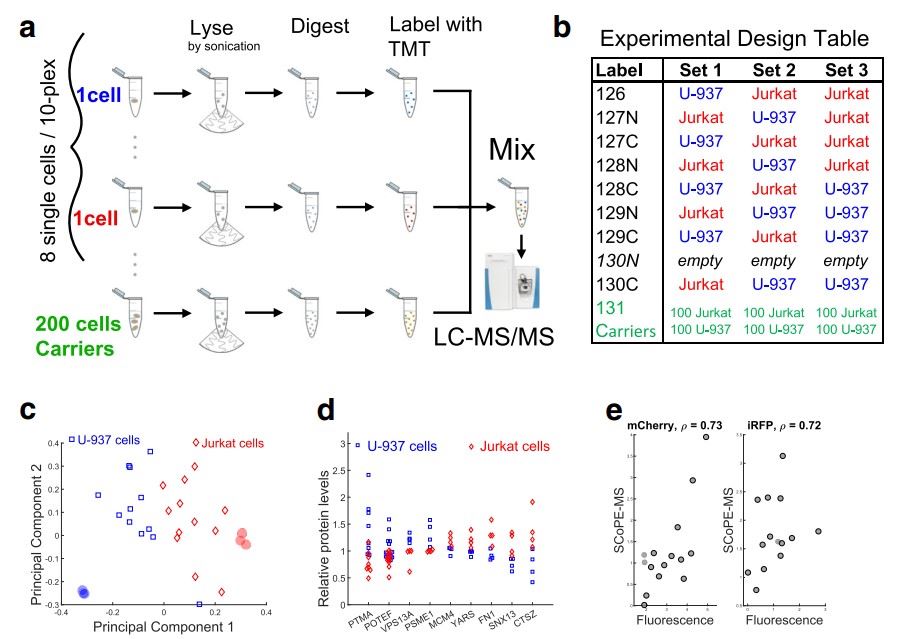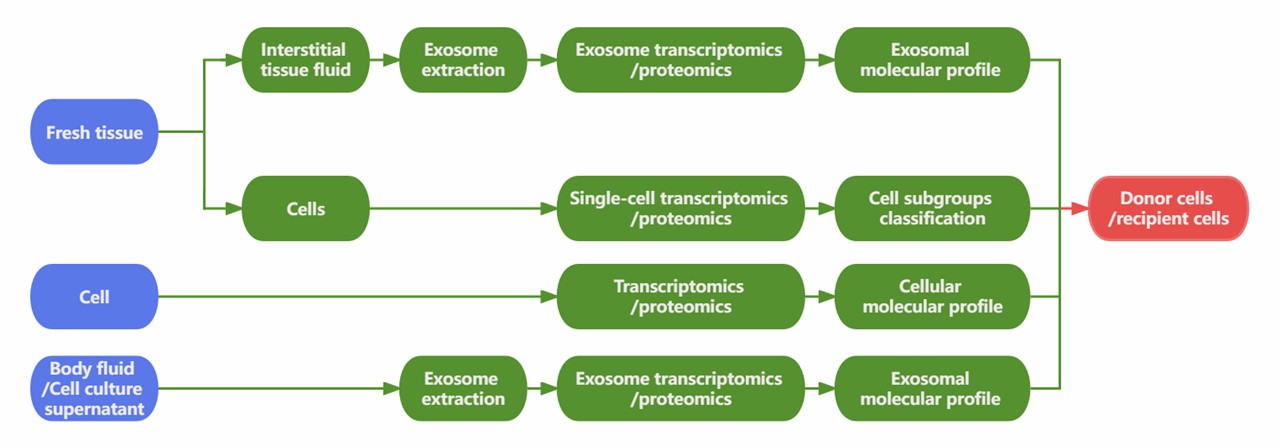Single-Cell and Exosome Combined Research Services
Overview Services Features FAQs
Overview
Joint Analysis of Single-Cell Sequencing and Exosome-Omics
Exosomes not only circulate in body fluids but also shuttle between interstitial spaces. Carrying components such as RNA, protein, and lipid, exosomes are nanoscale vesicles secreted by living cells and are carriers of communication between different cell subgroups. Since exosomes are secreted by almost all cell types, there is great heterogeneity in exosomes isolated from body fluids or tissues. Even exosomes secreted by the same type of cells are functionally heterogeneous. This hinders researchers from deeply and accurately understanding the mechanism of action of exosomes in diseases and discovering more disease-related biomarkers.
Single-cell sequencing can break through the limitations of traditional sequencing technology and improve the resolution of sequencing to the single-cell level, reflect the heterogeneity among cells, analyze the subtler differences between cells, and effectively reveal the state and function of individual cells. Excitingly, the combination of single-cell multi-omics technology and exosome multi-omics technology can deeply analyze the heterogeneity of exosomes and the source of key exosome molecules, providing a more powerful weapon for exosome research.
Creative Biolabs can provide single-cell and exosome combined research services, helping customers trace the source of exosomes to more accurately mine the information in exosomes.
 Fig.1 Validating SCoPE-MS by classifying single cancer cells based on their proteomes.1,2
Fig.1 Validating SCoPE-MS by classifying single cancer cells based on their proteomes.1,2
Services
Joint Analysis Services of Single-Cell Sequencing and Exosome-Omics
To help customers to analyze exosomes at a deeper level, Creative Biolabs launched single-cell and exosome combined research services. First, the customer needs to provide tissue samples, cell samples, or bodily fluid samples. Then, the cells are subjected to single-cell sequencing detection to obtain cell subgroup classification information. Then, the omics analysis of the isolated exosomes can be performed to obtain the molecular expression profile of exosomes. Finally, the integrated analysis of cell subgroup classification information and exosome molecular expression profile can determine the main donor cells or the main recipient cells of key molecules in exosomes. This provides a basis for further in-depth research on the regulatory mechanism and disease markers of exosomes. Since single-cell sequencing technology is mainly divided into single-cell transcriptomics sequencing and single-cell proteomics sequencing, we can provide corresponding single-cell and exosome combined transcriptomics research service and single-cell and exosome combined proteomics research service, and resolve the heterogeneity of exosomes from protein level and transcript level, respectively.
 Fig. 2 Single-cell and exosome combined research workflow.
Fig. 2 Single-cell and exosome combined research workflow.
Features
-
Facilitates tracing the origin of exosomes
-
Integration of donor cell and exosome data
-
Advanced analytical strategies
-
Exceptional research support
Creative Biolabs is a professional exosome one-stop service provider. We can extract, identify and analyze exosomes from cell supernatants, body fluids, or tissues. Focusing on single-cell sequencing and exosome sequencing, we can meet the analysis needs of customers in different research backgrounds, provide personalized combined analysis, mine subsequent potential targets or diagnostic markers for customers, and provide follow-up exosome functional research services in vivo and in vitro. If you have such research needs, please contact us immediately and leave your information. Our professional technical team will reply the first time and formulate the most suitable plan and the best combined sequencing service for you.
FAQs
Q: How should samples be prepared for joint analysis of single-cell sequencing and exosome omics?
A: Sample preparation is critical to the success of the experiment. For single-cell sequencing, the samples should be a cell suspension with high viability and free from contamination, ensuring sufficient cell quantity. For exosome omics, samples need to be purified using ultracentrifugation or other separation techniques to ensure the absence of cell debris or other impurities. We can provide detailed sample handling recommendations based on your needs.
Q: What scientific questions can be addressed through joint analysis of single-cell sequencing and exosome omics?
A: Joint analysis can help clients trace the cellular origin of exosomes and reveal the communication mechanisms between cells via exosomes.
Q: Can we perform secondary analysis or data integration based on our existing experimental data?
A: Yes, if you already have some single-cell sequencing or exosome omics data, we can assist with secondary analysis and data integration. Please contact us with the details of your existing data, and our technical team will assess the feasibility of the joint analysis.
References
-
Budnik, B.; et al. SCoPE-MS: mass spectrometry of single mammalian cells quantifies proteome heterogeneity during cell differentiation. Genome Biology. 2018, 19(1):161.
-
Distributed under Open Access license CC BY 4.0, without modification.
For Research Use Only. Cannot be used by patients.
Related Services:

 Fig.1 Validating SCoPE-MS by classifying single cancer cells based on their proteomes.1,2
Fig.1 Validating SCoPE-MS by classifying single cancer cells based on their proteomes.1,2
 Fig. 2 Single-cell and exosome combined research workflow.
Fig. 2 Single-cell and exosome combined research workflow.









